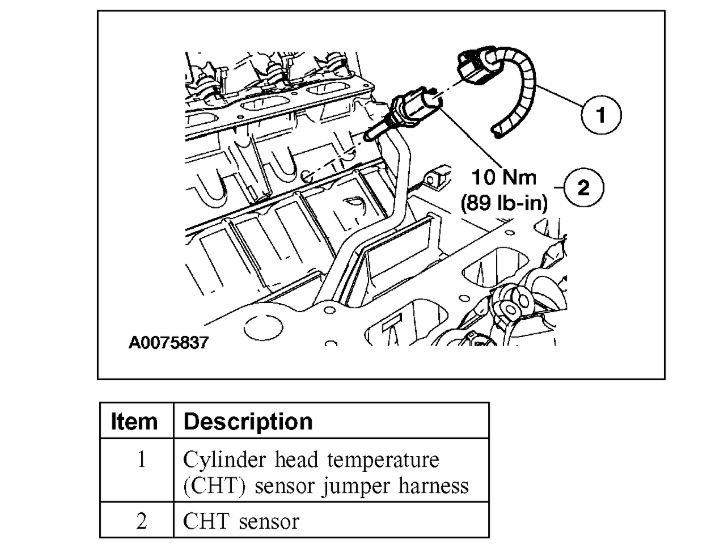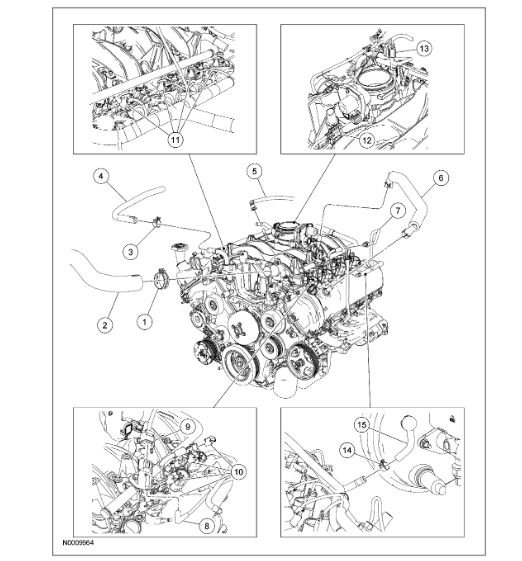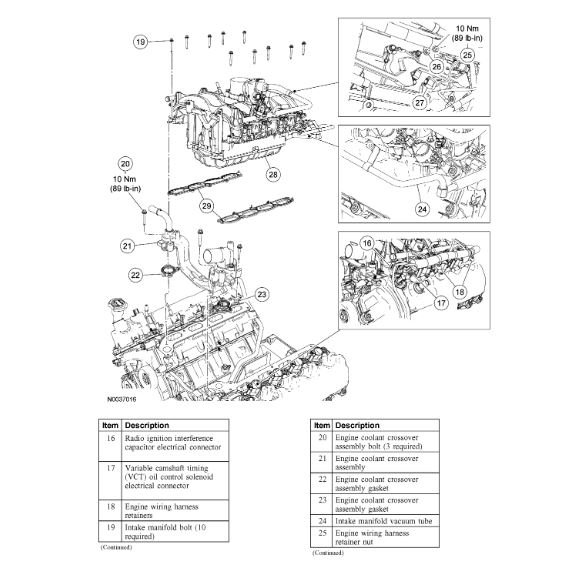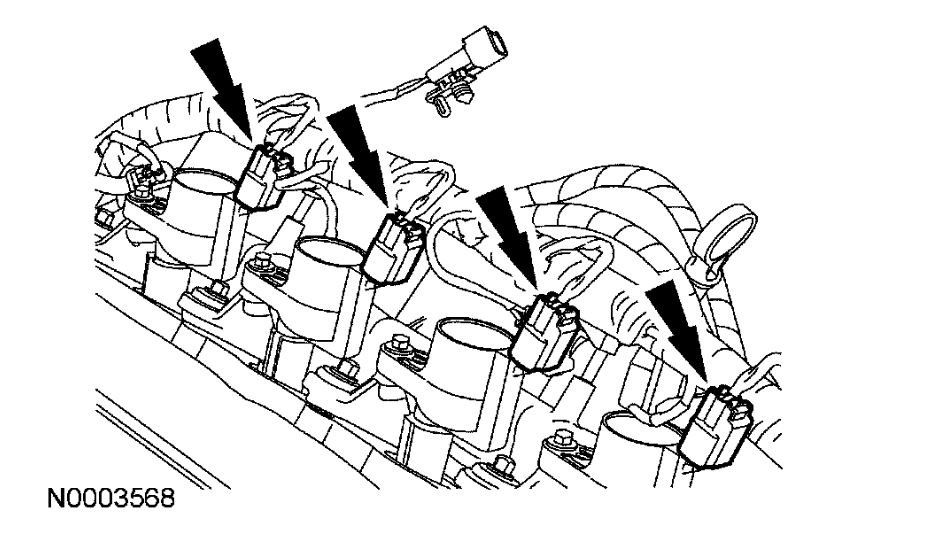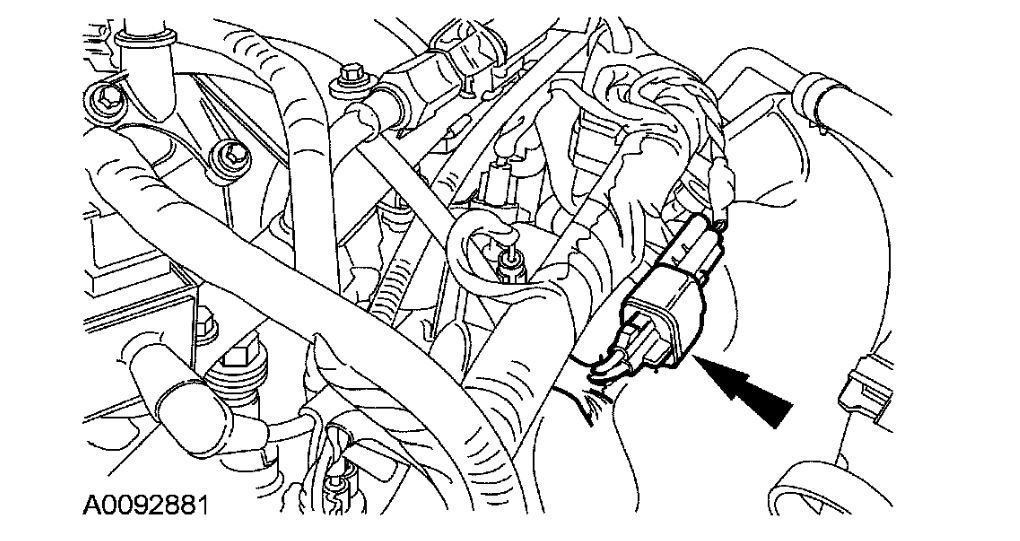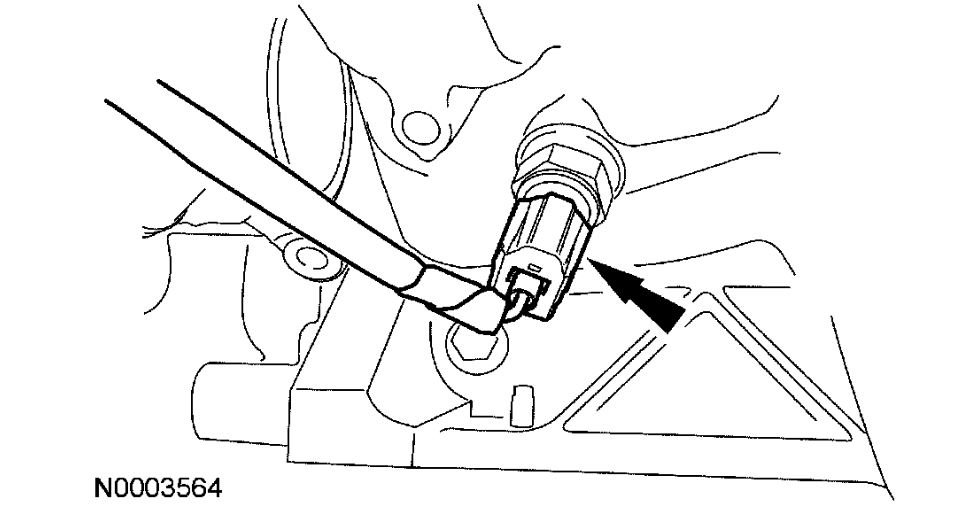Good afternoon,
It is located under the intake manifold. It is a big job as you have to remove the intake manifold to access it.
Why are you replacing it?
Roy
Removal
WARNING: Do not smoke or carry lighted tobacco or open flame of any type when working on or near any fuel-related component. Highly flammable mixtures are always present and may be ignited. Failure to follow these instructions may result in personal injury.
WARNING: Fuel in the fuel system remains under high pressure even when the engine is not running. Before servicing or disconnecting any of the fuel lines or fuel system components, the fuel system pressure must be relieved to prevent accidental spraying of fuel, causing personal injury or a fire hazard.
1. Disconnect the fuel supply tube spring lock coupling.
2. Drain the cooling system.
3. Remove the generator.
4. Remove the air cleaner.
5. Disconnect the upper radiator hose from the thermostat housing.
6. Disconnect the heater coolant hose from the coolant bypass tube.
7. Disconnect the quick connect coupling and remove the evaporative emissions (EVAP) tube from the intake manifold.
8. Disconnect the fuel rail pressure and temperature sensor electrical connector and vacuum connector.
9. Disconnect the 8 fuel injector electrical connectors.
ImageOpen In New TabZoom/Print
10. Disconnect the 4 LH ignition coil electrical connectors.
11. Disconnect the throttle position (TP) sensor and electronic throttle control electrical connectors.
ImageOpen In New TabZoom/Print
12. Disconnect the heated PCV element electrical connector.
ImageOpen In New TabZoom/Print
13. Disconnect the engine oil pressure (EOP) sensor electrical connector.
ImageOpen In New TabZoom/Print
14. Disconnect the LH camshaft position (CMP) sensor electrical connector.
15. Disconnect the LH variable camshaft timing (VCT) solenoid electrical connector.
16. Disconnect the LH radio ignition interference capacitor electrical connector.
17. Disconnect the wiring harness retainers from the LH valve cover studs and position the harness aside.
18. Disconnect the brake booster vacuum hose from the intake manifold vacuum tube.
19. Remove the 10 intake manifold bolts.
20. CAUTION: Do not use metal scrapers, wire brushes, power abrasive discs or other abrasive means to clean the sealing surfaces. These tools cause scratches and gouges which make leak paths. Use a plastic scraping tool to remove all traces of old sealant.
Remove the 3 bolts, the coolant bypass tube and discard the gaskets.
Clean and inspect the sealing surfaces with silicone gasket remover and metal surface prep. Follow the directions on the packaging.
21. Disconnect the charge motion control valve (CMCV) electrical connector.
22. Disconnect the intake manifold vacuum tube from the valve cover stud and the support bracket.
ImageOpen In New TabZoom/Print
23. Position the intake manifold assembly forward and disconnect the cylinder head temperature (CHT) sensor jumper harness electrical connector.
ImageOpen In New TabZoom/Print
24. Disconnect the LH and RH knock sensor (KS) electrical connectors.
25. Remove the nut and disconnect the engine wiring harness retainer from the CMCV stud.
ImageOpen In New TabZoom/Print
26. Disconnect the RH heated exhaust gas oxygen sensor (HO2S) electrical connector and detach the electrical connector retainer.
27. CAUTION: Do not use metal scrapers, wire brushes, power abrasive discs or other abrasive means to clean the sealing surfaces. These tools cause scratches and gouges which make leak paths. Use a plastic scraping tool to remove all traces of old sealant.
Remove the intake manifold and discard the gaskets.
Clean and inspect the sealing surfaces with silicone gasket remover and metal surface prep. Follow the directions on the packaging.
Images (Click to make bigger)
SPONSORED LINKS
Wednesday, June 3rd, 2020 AT 9:23 AM
